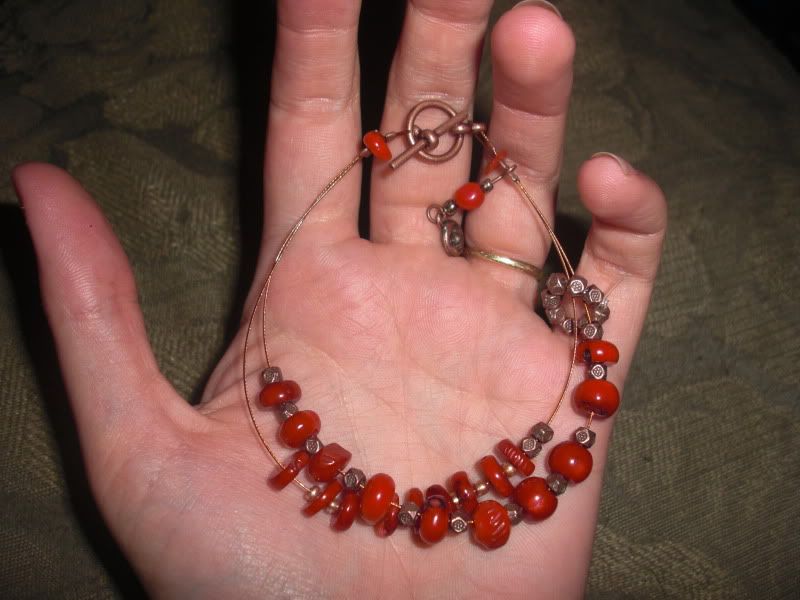Spending more and more time on Ravelry, I keep being introduced to more and more beautiful projects. With the Wisdom Poems Sock from Yarn Christmas, I decided to make a beautiful pair of textured fingerless gloves from the pattern here - I call this project my parrot gloves, because when I first saw it, that colorway reminded me of their iridescent feathers. Turns out that the colorway actually shades from the shining blues and greens into orange and red also - pretty much a rainbow - which greatly disappointed me at first, until I hit upon a bothersome but ultimately irresistible idea - cut out the colors that don't look like a parrot and use only some parts of the skein. So I cut it and rewound it into several smaller balls.
Gorgeous! But at any rate, this got me started thinking. One other thing I like about Ravelry is that you can use it almost like a time machine - see what your projects might look like, before you knit them, by looking at other people's finished projects. It can give you a good idea of what colors or types of yarn you would like to use with a particular pattern. And one thing I noticed here was the way that color variegated yarns tended to diminish the detailed texture of these gloves - you see the color change first and the pattern second. Single color yarns, though, make the pattern stand out beautifully. And to go to all that trouble creating that texture, I am damn sure not going to ruin it. But I still wanted to use this color changing yarn.
My solution? I'm going to try to do these gloves with intarsia techniques, and make each 'scale' from a different section of the skein, so the color change is broken up. Yeah. I know. They're knitted in the round. And it's going to be really complicated. I know. Ok?
But I think it's doable, especially because the particular textures here can lend themselves to helping out. The problem with doing intarsia in the round is that when you start the next round, your free yarn is over at the other side of that color section, NOT where you need it. But I think I can work around this by more or less knitting these gloves 'flat', and joining as I go.
These gloves are done with 6 repeats of a pattern chart. Let's say I start at repeat one, and work my way through 2, 3, 4, 5, etc. When I finish repeat number six, and would go back to repeat one in normal round knitting, instead I will pick up a stitch right on the edge of repeat one, turn, and go back working on the wrong side (making the first stitch on that side either a k2tog or p2tog instead of k or p to keep stitch numbers constant) - going back from six to one. This allows me to do each section the way I want to, changing strands with normal intarsia techniques as I move from scale to scale, and still end up with a round garment with no visible seam, as I suspect those little picked up stitches will not show in the change from one scale to another.
I imagine that some version of this technique has been invented multiple times by knitters in the past, but I thought of it on my own and I'm a little proud of it.
There are only three challenges left, but I feel that figuring that out was the hardest one.
1. All the knit stitches in this pattern are ktbl, making twisted rib. I hope that when you do this from the wrong side it looks the same, but I don't know - I'll have to look that up.
2. The chart is written as if you are knitting in the round, so I will have to reverse every other row since I am effectively knitting flat.
3. I will need twelve different strands of yarn at a time to do this. My previous best experience was using seven strands. I hope I am up to keeping them from tangling.
4. I have to actually knit this now that I worked out the pattern. And I have to do it twice because these are gloves.
Hmm. That was four. Well, it's not worked out 100% yet. Anyway I'm waiting for the second skein to come in the mail, because I don't think that part of one skein will be enough.
On the upside, I will also have a handful of little balls of red-orange-yellow-purple portions of the skeins, so maybe I'll think of something cool to do with those. I'll have to cut either the yellow or the purple ends off, though, because I don't like those two together.

